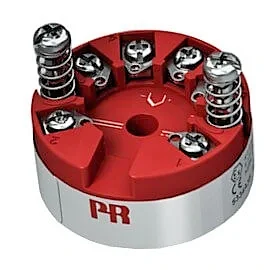What Are Temperature Transmitters?
TL;DR — Quick Summary
A temperature transmitter converts a sensor signal into a standard industrial output, most commonly 4–20 mA, allowing temperature data to be accurately transmitted over long distances. They improve signal quality, reduce wiring costs, and are available in in-head, DIN rail, or ATEX-certified designs for hazardous areas.

Understanding Temperature Transmitters
Temperature transmitters work alongside temperature sensors (like thermocouples or resistance thermometers) to produce a standardised output signal. This enables:
- Long-distance transmission of temperature data without loss of accuracy.
- Integration with industrial control systems, SCADA, or PLCs.
- Reduced wiring costs, as the transmitter can drive signals further than sensor cables alone.
Common Features
- Signal Conversion: Converts thermocouple or RTD input to 4–20 mA or other industrial outputs.
- Mounting Options:
- In-head transmitters: Installed directly in the sensor head.
- DIN rail transmitters: Mounted in control panels for multiple sensor inputs.
- ATEX-Certified Models: Suitable for potentially explosive environments, such as chemical or pharmaceutical plants.
- Improved Accuracy: Conditioned signals are less prone to noise or interference.
Applications
Temperature transmitters are widely used in industries that require accurate, long-distance temperature monitoring, including:
- Process control in chemical plants.
- Food and beverage production.
- Pharmaceutical manufacturing.
- Metal processing and smelting.
- HVAC and building management systems.
FAQs
Q: Why use a temperature transmitter?
To convert sensor signals into standard outputs for accurate, long-distance transmission and integration with industrial systems.
Q: What signals do they output?
The most common is 4–20 mA, but other outputs, such as 0–10 V, are also available.
Q: Can they be used in hazardous areas?
Yes, ATEX-certified transmitters are designed for explosive atmospheres.
Q: Do they improve accuracy?
Yes, transmitters condition the signal, reducing noise and errors from long cable runs.
Where are they mounted?
Either directly in the sensor head (in-head) or in a control panel (DIN rail).
If you want to order a temperature sensor or you are unsure exactly what you need, get in touch and we can help you.
